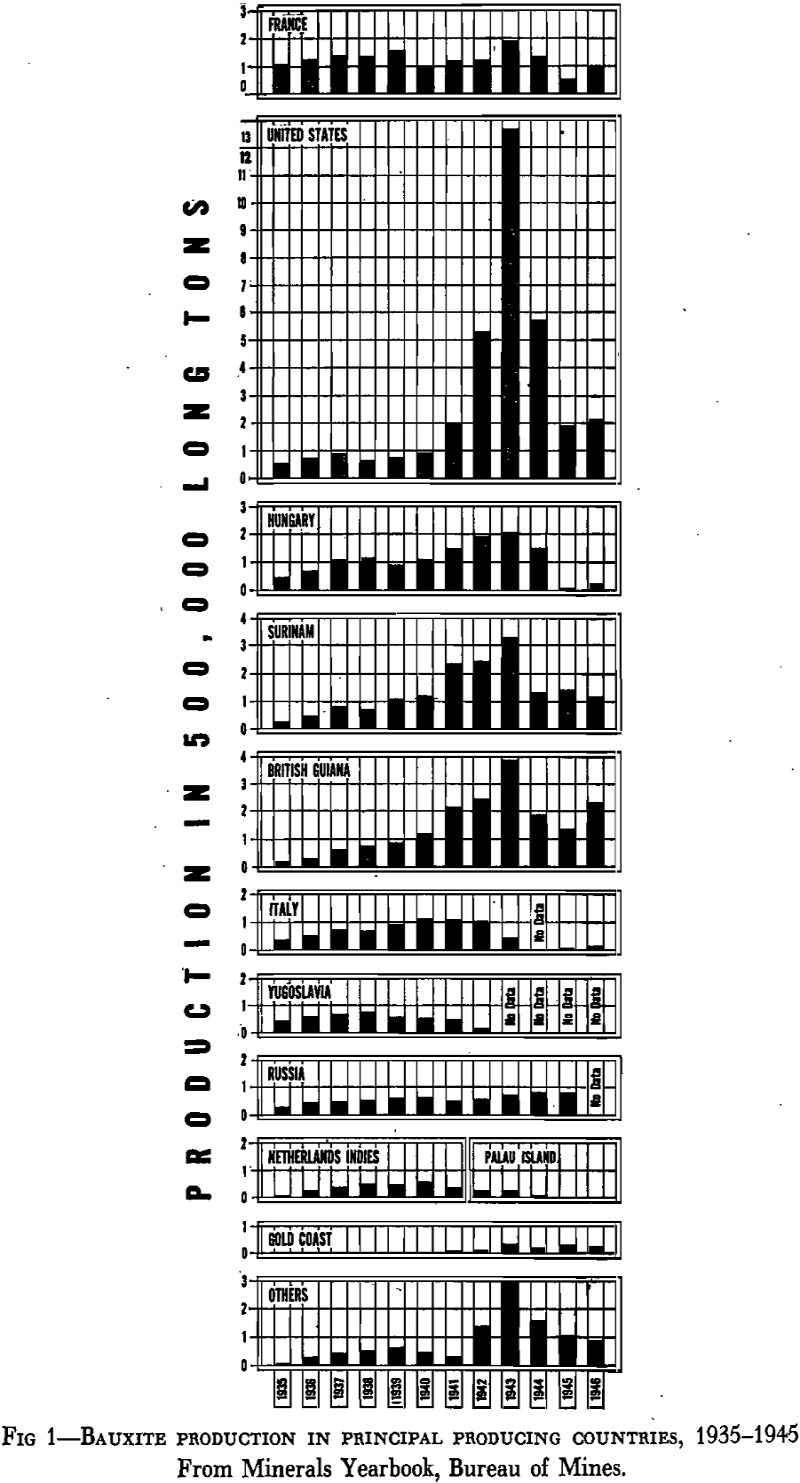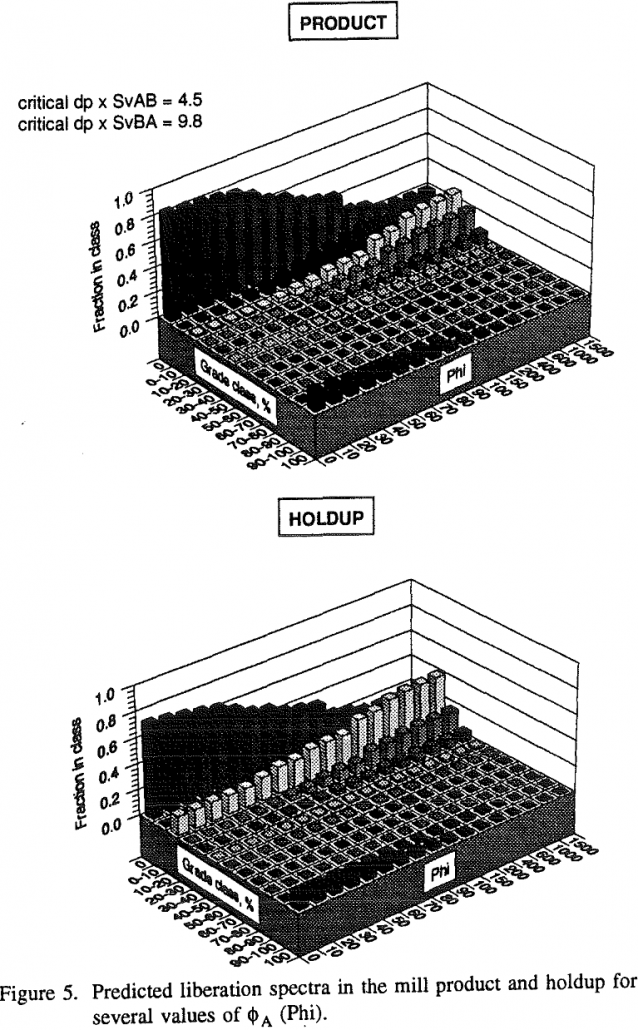Chromite

The minerals that collectively are known as chromite form an isomorphous series of the general formula (Mg,Fe)O. (Cr,Al,Fe)2O3. So wide is the range in chemical composition in this group that chrome ore consisting entirely of the mineral chromite may range from less than 30 pct to more than 60 pct Cr2O3. The most comprehensive published […]
Bauxite

Bauxite is known mainly as the ore from which aluminum is smelted but it has large use also in the manufacture of artificial abrasives and as a basis for certain chemical industries. A small amount is used for refractories and for other purposes. Composition Dana and others give the mineral formula of bauxite as Al2O3·2H2O […]
Search for Heavy Minerals by Equilibrium Concepts

A river delivers a given load of sand, and hence of heavy minerals, into the sea into which it empties. This load is fixed by drainage basin characteristics and processes. Wave energy available for redistributing that load is fixed in an entirely different way. Estuarine Traps Rivers which flow into estuaries, sounds, lagoons, or bays […]
Gross-Count Method of Microscopic Quantification

Microscopic evaluation of trace quantities of metalliferous phases in flotation products requires counting large numbers of particles. Particle counts of many thousands may be required for precision, but not “obtained practically by conventional microscopic techniques. A less tedious microscopic method for evaluating trace sulfides in mill tailings was developed for the O’okiep Mining Company in […]
Bacteria & Hydrogeochemical Prospecting

Action of certain strains of bacteria has been implicated as a significant factor in the oxidation of ore deposits. Other bacteria are thought to be significant in the formation of syngenetic sedimentary ores and in supergene enrichment processes. A normal soil/ground-water regime provides all of the necessary pH and Eh conditions for several groups of […]
Mineral Liberation in an Operating Ball Mill

The calculation of the liberation spectrum in the product from a continuously operating ball mill is both important and difficult The liberation spectrum depends on the mineralogical texture of the ore from which the mill feed derives and also on the processing steps through which portions of the feed have passed prior to milling. These […]
Titanium Mineralogy
The study of minero-petrographical characteristics and the subsequent textural and structural characterization of an ore mineral represents the first step of each industrial processing whose aim is the beneficiation of each valuable mineral phase present inside the ore. Analytical, mineralogical and petrographical, chemical and multispectral image analyses based investigations, applied to eclogitic ore samples deriving […]
Stop Mining Method

Stop Mining Flat Deposit In the previous topic you were introduced to the different methods adapted to mine underground deposits. Well the basic elements are common to most underground mining operations, there are many variations in the theme. In the next three topics we will see how these methods can be adapted to mining deposits […]
Cobalt Mineralization – Mississippi Valley Type Rocks
Cobalt-sulfide mineralization can be found in potentially economic quantities where permeable, basal Cambrian formations “pinchout” against Precambrian paleotopographic highs. These environments are common around the Saint Francois Mountains of southeastern Missouri and they share many similarities with the geologic environments of Zambia and Zaire in South Africa. Exploration Philosophy Exploring for cobalt-bearing minerals in southern […]
Surface Tension of Wetting for Minerals
Critical Surface Tension of Wetting for Minerals: Another criterion satisfying the requirement for complete wetting can be deduced from Zisman’s concept of the critical surface tension of wetting (γc). Zisman and co-workers (as reviewed by Zisman, 1963; 1964) found a linear relationship between the cosine of the contact angle and the surface tension of a homologous […]
